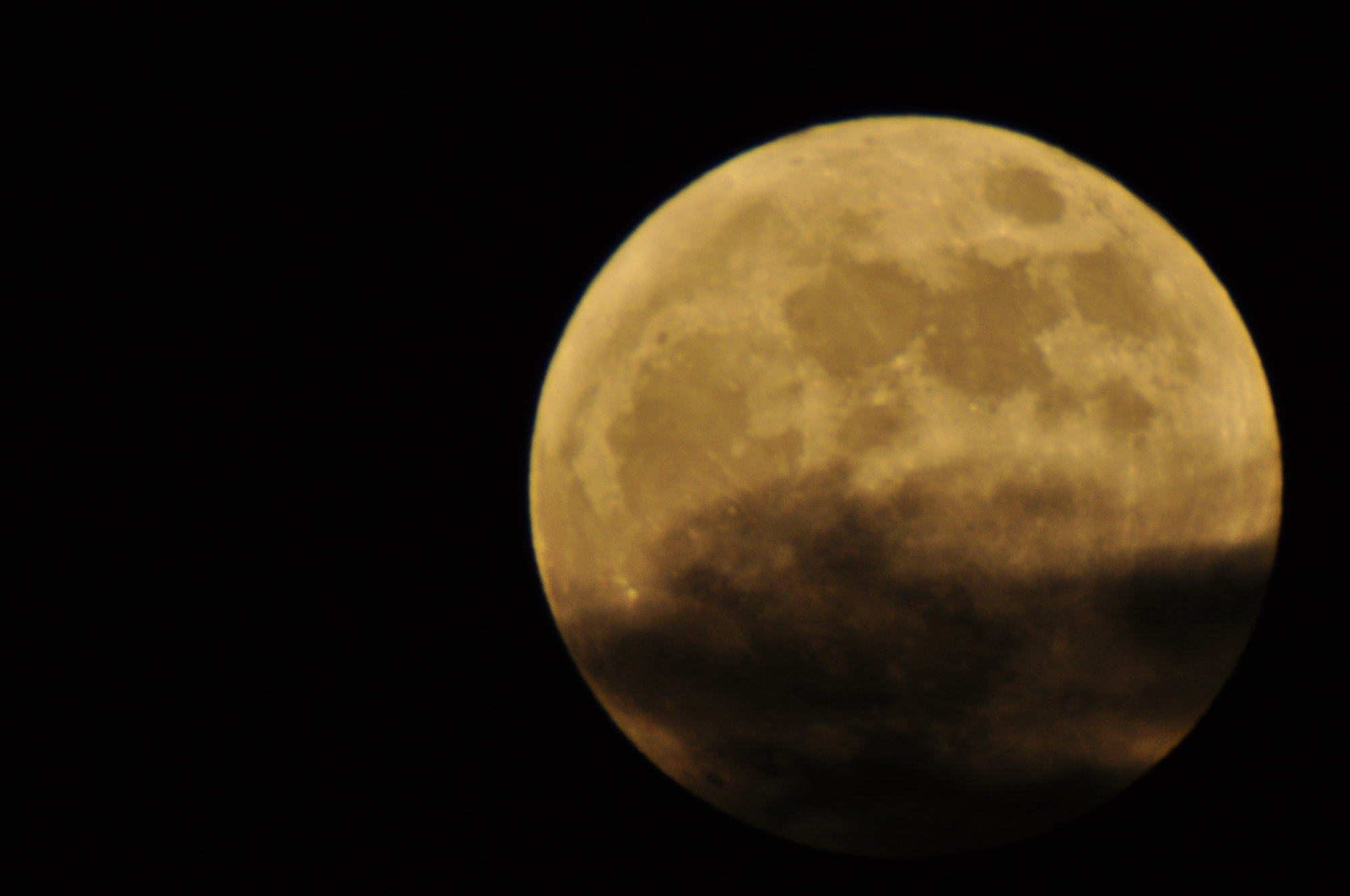
The biggest and brightest full moon of 2013 graces Earth's skies tonight (June 23), and armchair astronomers can get great views of this "supermoon" without even leaving the comfort of their homes.
The online Slooh Space Camera will air a free supermoon webcast tonight at 9 p.m. EDT (0100 GMT on June 24), featuring live high-definition views of Earth's nearest neighbor as seen by an observatory in the Canary Islands off the west coast of Africa.
You can watch the Slooh supermoon webcast here on SPACE.com, or follow the action at Slooh's website (www.slooh.com).
Supermoons occur because the moon's path around Earth is slightly elliptical. Distances between the two bodies vary from 225,622 miles (363,104 kilometers) at the closest lunar approach — known as perigee — to 252,088 miles (405,696 km) at the most distant point, called apogee. [Amazing Supermoon Photos of 2012]
When perigee and a full moon coincide, the result is a supermoon, which appears about 14 percent bigger and 30 percent brighter than a full moon at apogee.
"This unusual perfect confluence of lunar perigee and full moon will create the highest tides of the year," Bob Berman, contributing editor and monthly columnist for Astronomy magazine, said in a statement. Berman will participate in Sunday's hourlong show, along with a Slooh broadcast team.
"We can expect expose-the-sand lows and lap-the-boardwalk highs on Sunday and especially Monday, since the oceans usually require a day to catch up with the behavior of the moon," Berman added.
Get the Space.com Newsletter
Breaking space news, the latest updates on rocket launches, skywatching events and more!

Tonight's supermoon comes just two days after the northern summer solstice, when the sun appeared to shine farthest to the north of the equator. Friday (June 21) was the longest day of the year in the Northern Hemisphere and marked the start of summer there. (It signalled the beginning of winter for folks in the Southern Hemisphere).
"This is thus a 'solstitial moon' as well. The visual effect is to make this the lowest-down full moon of 2013," Berman said. "And since lower moons tend to be orange-yellow or amber, shining as they do through more than twice as much reddening air and moisture, this lunar experience should give us a true 'honey moon' all night long. Moreover, lower moons look larger thanks to the famous 'moon illusion.'"
The "moon illusion" is a mysterious optical effect that makes the moon look much bigger when it rises behind objects on the horizon than it does high up in the sky.
Editor's note: If you snap an amazing photo of the Sunday supermoon and you'd like to share it for a possible story or image gallery on SPACE.com, please send images and comments, including equipment used, to managing editor Tariq Malik at spacephotos@space.com.
Follow Mike Wall on Twitter @michaeldwall and Google+. Follow us @Spacedotcom, Facebook or Google+. Originally published on SPACE.com.
Join our Space Forums to keep talking space on the latest missions, night sky and more! And if you have a news tip, correction or comment, let us know at: community@space.com.

Michael Wall is a Senior Space Writer with Space.com and joined the team in 2010. He primarily covers exoplanets, spaceflight and military space, but has been known to dabble in the space art beat. His book about the search for alien life, "Out There," was published on Nov. 13, 2018. Before becoming a science writer, Michael worked as a herpetologist and wildlife biologist. He has a Ph.D. in evolutionary biology from the University of Sydney, Australia, a bachelor's degree from the University of Arizona, and a graduate certificate in science writing from the University of California, Santa Cruz. To find out what his latest project is, you can follow Michael on Twitter.









